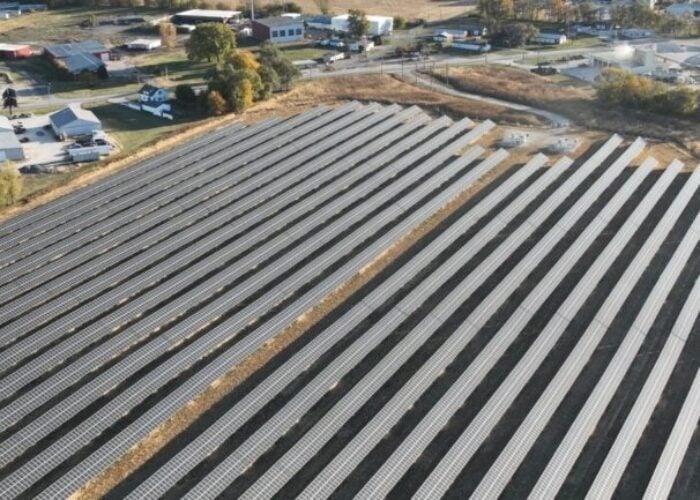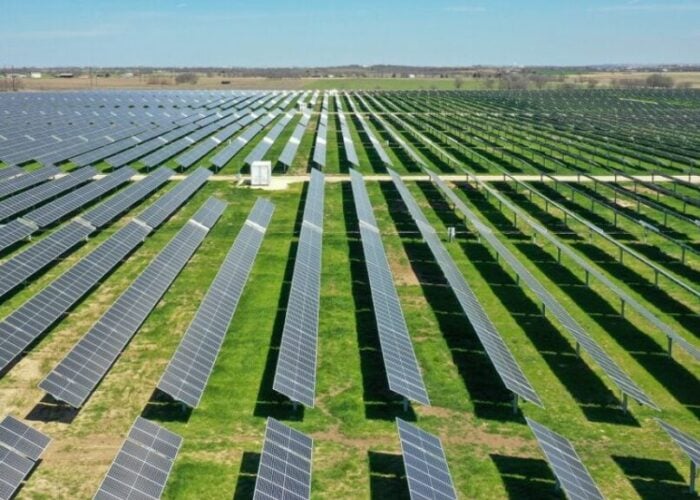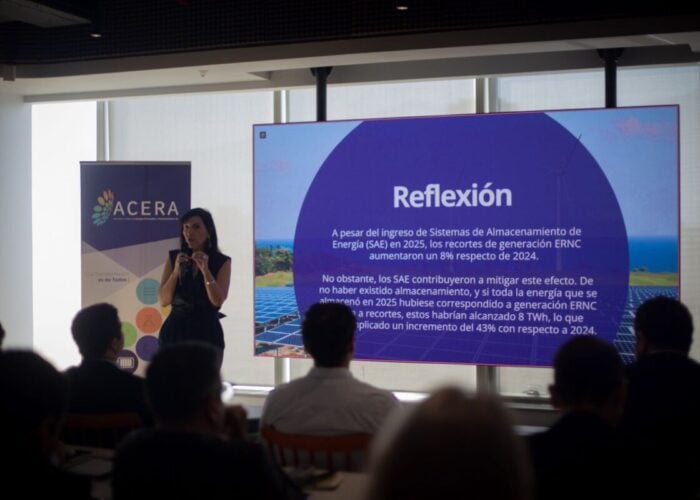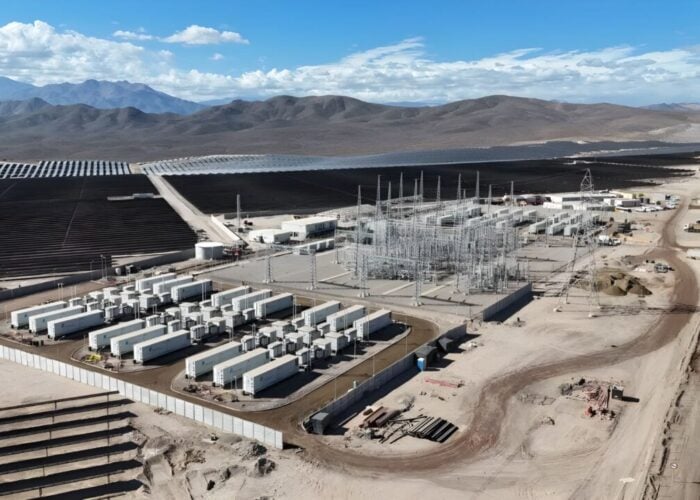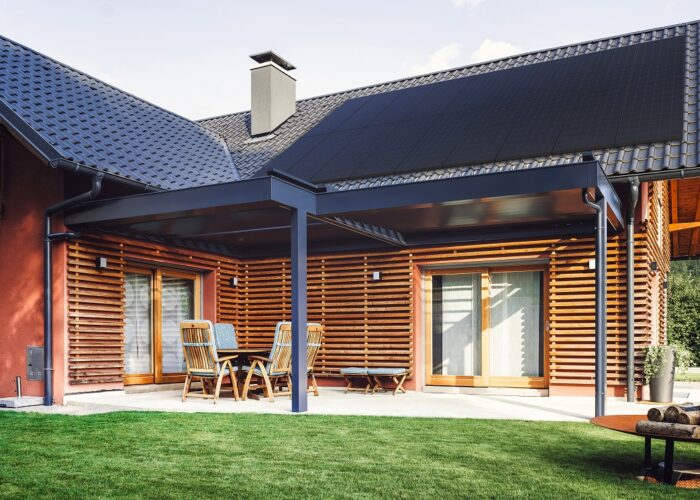For leading c-Si manufacturers, three issues have been influencing $/W cost metrics during the past couple of years: blended silicon cost, non-silicon process cost, and cell efficiency/module power.
While strategies and roadmaps can be implemented to address each of these three issues separately, silicon cost reduction has dominated over the other two by a considerable margin, with polysilicon ASPs falling to current lows in the $20–25/kg range.
Try Premium for just $1
- Full premium access for the first month at only $1
- Converts to an annual rate after 30 days unless cancelled
- Cancel anytime during the trial period
Premium Benefits
- Expert industry analysis and interviews
- Digital access to PV Tech Power journal
- Exclusive event discounts
Or get the full Premium subscription right away
Or continue reading this article for free
Indeed, some of the c-Si manufacturers with industry-leading $/W cost metrics during 2H’11 were simply the ones that found themselves benefiting most from the decline in polysilicon ASPs. Often, this owed more to fortuitous ‘timing’ of PV market-entry, than to any astute corporate strategy.
For example, many companies (with bulk material buying power) entering the PV industry during 2010 and 2011 were presented with an environment in which flexible short-term and spot market poly pricing offered an immediate cost advantage over existing competitors that were hamstrung by legacy long-term poly contracts.
Poly ASP ‘normalization’ resets competitive rankings
Poly pricing for most leading Tier 1 Chinese c-Si manufacturers (ingot-to-module) is now becoming somewhat normalized and – once some of the idealized fully-integrated poly-to-module aspirations are taken offline – silicon costs will then become less of a differentiator among c-Si market leaders.
Poly ASP declines can no longer be relied upon to assist in driving down costs. And while certain voices are admirably talking up a rebound in poly prices, it is notable that those citing price increases are typically those set to benefit from any poly price increase.
It is difficult to see an environment in which poly ASPs can rebound. At one extreme, short-term market softness would create chronic poly oversupply; alternatively, strong market growth or demand-elasticity is likely characterized by slowly declining ASPs through the value-chain as new (incentive-free) demand comes online.
Advanced cell concepts remain a challenge
Every manufacturer has a roadmap for c-Si cells. However, it is still unclear how many of these concepts are viable in mass production. Indeed, there is limited data on offer to support some of the timelines or process changes that are required to implement them.
In fact, the roadmaps are not dissimilar to those advocated two decades ago: selective emitter formation, wrap-through back-contact cells, interdigitated rear-junction cells, etc. Even incremental process flow changes remain a challenge: p-type to n-type substrates, rear passivation layers, electro-plating, ion implanting, etc.
The only advanced cell designs that are mass-production ‘proven’ remain SunPower’s back-junction cells and Panasonic/Sanyo’s heterojunction ‘HIT’ cells. Notably, R&D and ‘learning’ within each of these companies dates back to the 1990s and early 2000s, with considerable in-house IP and know-how. The only ‘advanced’ process flow change that has been widely adopted across other leading c-Si manufacturers in the past 12 months has been front-surface double/screen-printed metallization.
Strategies to move cell efficiencies above the 17–18% level have been varied. Adopting technology-transfer arrangements with leading PV academic labs has been prevalent for many c-Si manufacturers seeking to fast-track cell improvements to challenge the achievements of SunPower and Sanyo. Indeed, parallels can be drawn today in the actions of leading c-Si manufacturers in China with those undertaken previously by European c-Si cell front-runners.
European efforts typically involved regionally-funded coordinated efforts between local R&D labs (imec, ECN, Fraunhofer ISE, ISFH, etc.) and domestic cell manufacturers, but barely resulted in any meaningful changes to installed cell capacity. Current c-Si leaders in Asia have been reaching out to many of the same research labs. Whether they will succeed in implementing some of these R&D concepts is yet to be proven.
These comparisons are most evident in the metal-wrap-through (MWT) developments in China today; through-silicon-via (TSV) interconnects may be commonplace in adjacent technologies, but PV adoption is potentially far more challenging and requires both cell and module process change.
Taiwan cell makers’ strategy may be more realistic
While risk may be assigned to the ambitious plans in China for advanced cell designs, the strategies of leading Taiwan cell makers reveal a more cautious approach that may yet prove to be sustainable in the long term. Here, the focus has been on optimizing the performance and yield when using standard process tools and flows, not by seeking to commercialize hero-results disseminated out of academia.
PV manufacturing is some way from being streamlined, and the final makeup of the value-chain is far from clear. Over the past decade, as different countries and regions have claimed pole position, each has enacted plans for full vertical integration. However, being top-of-the-class for everything is a challenge, and it is not inconceivable that geographic powerhouses will emerge along the value chain, with cell manufacturing in Taiwan possibly being the gold standard.
Cost reduction outranks efficiency roadmapping
Regardless of the desired roadmaps and technology inflection points that provide headlines for corporate marketing efforts, cost reduction remains the operational imperative for every c-Si manufacturer.
Cost reduction options exist everywhere along the c-Si value chain, from polysilicon production to module encapsulation. Add to the mix equipment and materials improvements and the question is not so much what to focus on, but how to prioritize the different cost-reduction options available.
Therefore, with silicon ASPs reaching ‘equilibrium’ status and efficiency-enhancement remaining a challenge, all efforts are focused on cost reduction as the most likely candidate to bring down $/W costs during the next 12–18 months. As outlined within the recent Solarbuzz Quarterly Report, during Q1’12, module processing costs became the largest component of silicon and non-silicon costs for leading Chinese c-Si manufacturers. As a result, this segment of the value-chain is likely to undergo the greatest level of Y/Y cost reduction during 2012.
Once the leading candidates for non-silicon cost reduction have been exhausted, advanced cell designs and process flow changes will be prioritized with greater emphasis. However, this may not occur until 2014. But at this time, expect a far more collaborative effort along the value chain and more openness regarding the key challenges that need to be addressed.

